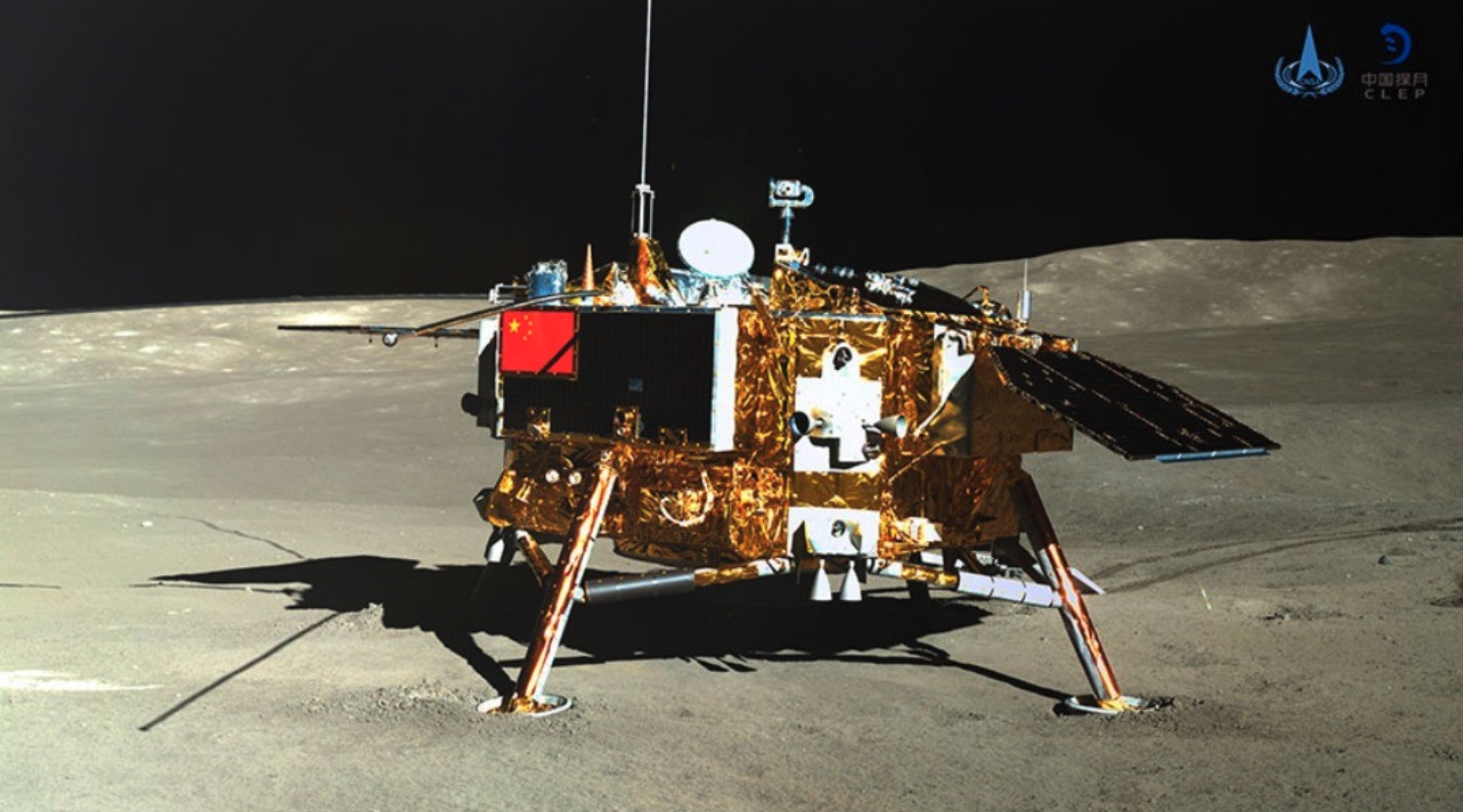
China's Next Lunar Mission to Break New Ground and Do What No Other Country Has Ever Managed
Chinese officials recently announced its next lunar mission, which will attempt to break new ground and achieve what no other country has managed to do thus far by bringing back the first samples ever extracted from the far side of the lunar surface. It has also said it will be ramping up ambitions to put some of its astronauts on the lunar surface before 2030 and establish an international lunar research station.
In a statement released by the CNSA (China's National Space Administration) in late September 2023, the mission is officially called Chang'e-6, and preparations are already underway and progressing well. It was also noted that the accompanying relay satellite for the upcoming lunar mission would be deployed at some point within the first six months of 2023.
More recently, during the International Astronautical Congress in Baku, Azerbaijan, the CNSA focused on another upcoming mission called Chang'e-8, which is expected to launch in 2028. Officials in China have called for a more collaborative global effort for the unmanned lunar expedition.
The expedition led by the Chinese in 2028 looks forward to working together with partners from other nations for the orbit operation, jointly exploring the lunar surface, developing the spacecraft needed for the mission, and carrying out spacecraft-to-spacecraft contact and exchange.
The mission would need a spacecraft that allows for up to 440 pounds (200 kilograms) of foreign science payloads. It would enable any foreign partner countries to piggyback off the Chinese mission to conduct their own research and experimentation on the surface of the moon's dark side.
The global superpower anticipates both of the lunar missions, as well as the Chang'e-7 mission that's expected to launch in 2026, to yield vast amounts of crucial data that will help towards building a permanent structure on the moon's south pole to act as an international research station. It's part of China's effort to become a bigger player in the field of space exploration, and they have said that creating a structure like this on the moon could be achievable by 2040.
In 2019, China's ambitious space plans saw it become the world's first nation to send a rover to the moon's far side. The CNSA also finished constructing the Tiangong space station that orbits Earth toward the end of 2022. They have also said they plan to make history and become the second nation to land a manned mission on the lunar surface by the end of this decade.
One of the country's goals is to build international ties through collaborative space missions like this. However, few space-faring nations with advanced space programs have accepted the invitation to build planned lunar research stations. According to Chinese state media, only Russia, South Africa, and Venezuela have opted to come on board.
China isn't the only country that's currently in the process of expanding its space program with plans to land on the moon. In fact, several countries are planning their own missions. The main reason for this recent interest is that successful missions to the moon could unlock many scientific benefits, not to mention the national prestige it would bring the nation. Furthermore, missions like this can open up access to valuable new resources and help agencies progress further with their plans for exploring deep space in the future.
Just a few weeks ago, in September 2023, India's space agency also made history by becoming only the fourth country to land a spacecraft on the moon successfully – the Chandrayaan-3 spacecraft. No other lunar lander in the history of space exploration has managed to get as close to the south pole as the Indian-built spacecraft.
In the same week that India achieved this incredible feat, the Luna 25 spacecraft – Russia's first mission to the moon in several decades, failed when it crashed on the moon's surface.
The US has also been expanding its lunar program with the recent launch of the first test flight last year under the Artemis program. Just like the CNSA's bold ambition, NASA plans to send more US astronauts to the lunar surface in 2025 in a bid to construct a permanent scientific research base camp on the lunar surface. They also have their sights on the moon's south pole.
The United States has also been looking for international partners to join them, with well over 20 nations having already signed up. The international collaboration is officially known as the Artemis Accords program, and its slogan is "peaceful exploration of deep space." China's CNSA is not one of the space agencies to have signed up for the program.
A Look at China's upcoming lunar missions
A recent statement by the CSNA said that its upcoming Chang'e-6 mission in 2024 is intended to give us a deeper understanding of the far side of the moon. It will collect more samples, and it comes after ten previous lunar missions to the lunar side that's always facing our planet. It will also coincide with a Chinese national holiday associated with the moon called the Mid-Autumn Festival.
According to one of the senior officials currently working on the 2024 Chang'e-6 lunar mission, Hu Hao, the important samples' composition gathered during the mission will be thoroughly analyzed to help further our understanding of the moon's mysterious far side.
If everything goes according to plan, the Chinese spacecraft will safely land on a region on the far side of the moon, more commonly referred to in the scientific field as the South Pole-Aitken Basin. From there, it will gather rock and dust samples for testing and experimentation. He also pointed out that a major lunar landform is of particular scientific interest.
While the moon's near side is always visible from Earth, the far side can never be seen in this way. Darker imprints of ancient lava flow and large lunar mare dominate the moon's near side. In comparison, the far side appears to be covered in craters. The contrast between both sides of the lunar surface is still something that puzzles scientists.
As well as taking samples from the lunar surface, the Chinese-built spacecraft is also expected to carry satellites and other payloads from the program's international partners.
Examples include a miniature square-shaped satellite from Pakistan called CubeSat, an Italian laser corner reflector that can calibrate radar systems, a negative ion detector from the ESA (European Space Agency), and a French-built instrument capable of detecting radon gas.
Following on from the Chang'e-6 lunar mission will be the Chang'e-7 mission in 2026. This one will specifically be searching for potential resources in the south pole region. Then, two years after this mission, it will be followed by the Chang'e-8 lunar mission, which could then look at how best to use any lunar materials that were discovered in previous missions.
Since 2007, China has been successful in launching a total of five robotic probes. In the Chang'e-5 mission, the CSNA's previous mission, which landed on the lunar surface in December 2020, samples of soil and lunar rocks were returned for study.









